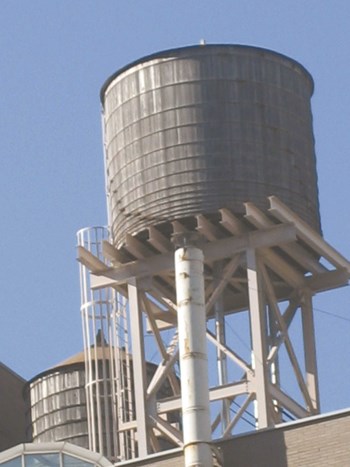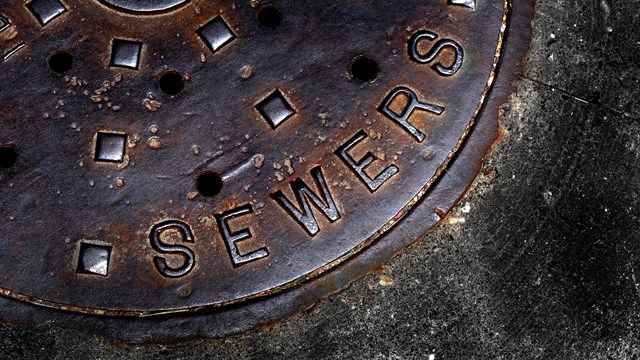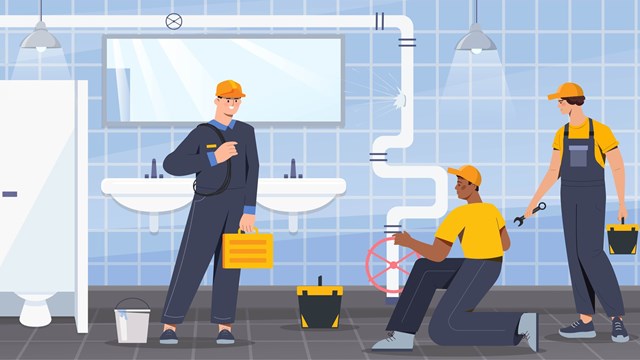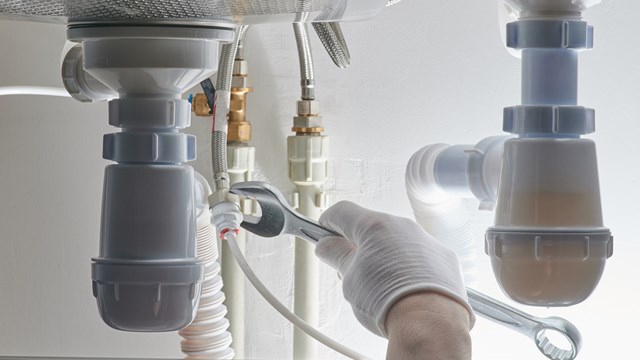
Few things annoy an apartment homeowner more than persistent low water pressure, be it at the shower, the kitchen sink or the toilet. So common the problem, one wonders what New Yorker hasn’t suffered from it and what property manager hasn’t struggled to solve it. Recently, an exasperated homeowner asked me, “Is it true I have poor water pressure because my building is old and I live on a higher floor?”
Truth be told, it is a myth that water pressure is determined by the age of a building. But, it is true that water pressure is lower at fixtures in higher floor apartments than in lower floor apartments in buildings where the roof tank provides the source of water. However, lower water pressure in the higher floor apartment does not necessarily mean “poor water pressure.”
Separating Fact from Fiction
To appreciate this answer, it helps to know where water pressure comes from. Water enters the building from the New York City main at the street main pressure which varies from as little as 30 pounds per square inch (PSI) to as much as 90 PSI, depending upon the location of the building and the time of day. The building’s house pump then pumps the water to the roof tank which becomes the source of water for most of the apartments. The street main pressure can be sufficient to feed water up to apartments as high as the sixth floor. Apartments not fed water by the street main pressure, are sourced by the roof tank.
When the roof tank is used as the source of water, water pressure is created by the force of gravity and is measured in pounds per square inch (PSI). It is calculated by using the vertical distance of the water column between the water level at the roof tank and the plumbing fixture, and multiplying it by .434.
In other words, for every one foot in distance below the roof tank water level, the water pressure increases by .434 PSI. As an example, for a building with a roof tank water level of two hundred (200) feet above the ground, the water pressure at the fixtures in a ground floor apartment will be approximately 86.8 PSI (200 x 434 PSI). However, in the penthouse apartment in the same building, the water pressure will be much lower. Assuming the penthouse apartment is located forty (40) feet below the roof tank water level, the water pressure at the fixtures will be approximately 17.37 PSI (40 x .434 PSI).
All things being equal, water pressure on higher floors is lower than it is on lower floors. But, this does not mean that the water pressure on higher floors is necessarily “poor pressure.” When the older buildings were constructed, engineers specified pipes with larger diameters to be used for the branch lines serving the apartments on higher floors. The larger-sized pipes provide a larger volume of water to the higher floors, offsetting the effect of lower water pressure. Smaller pipes were specified on the lower floors, and were sufficient due to the higher water pressure there.
Today, however, during a major renovation, a water pressure problem on a higher floor in an older building arises when a contractor or engineer unwittingly downsizes the branch piping that services the apartment. So many contractors—for lack of experience with older cooperative buildings—use a “one-size-fits-all” approach and specify smaller diameter replacement branch piping, even for higher floor apartments. Newly installed smaller pipe, which might be appropriate for lower floor apartments, townhouses, or private homes, may be the culprit of seemingly “poor water pressure” on higher floor apartments.
A contractor must be mindful of the uniqueness of the building’s structure and the original intention of it. Otherwise a tenant can be left permanently with a reduced volume of water at their fixtures which triggers complaints about the water pressure and feeds the myth that higher floor apartments have “poor water pressure.”
It’s Not Age
It is a myth that “poor water pressure” in a tenant’s apartment is due directly to the age of the building. Sometimes, however, people confuse low water volume from a fixture with poor water pressure. An apartment may be served by an appropriate amount of water pressure but the volume of water coming through the fixtures may be impaired or limited for reasons that are related to the age of the building.
The volume of water coming through the fixtures in an apartment on any floor—low or high—can be restricted by the buildup of rust from the oxidation and corrosion of the original galvanized pipes which are found in many older buildings.
The good news is that there are solutions to water pressure problems. Booster pumps are frequently used in the construction of newer buildings to increase the water pressure throughout the building and can be installed in older buildings where appropriate to increase the water pressure on the upper floors. However, the only solution to severely corroded piping is replacement.
Philip J. Kraus is president of Fred Smith Plumbing & Heating Co., Inc., a New York City Master Licensed Plumber, a Licensed Fire Suppression Piping Contractor, and a water purification expert. He has provided plumbing and heating services to New York City’s residential cooperative and condominium buildings for over 40 years.






14 Comments
Leave a Comment